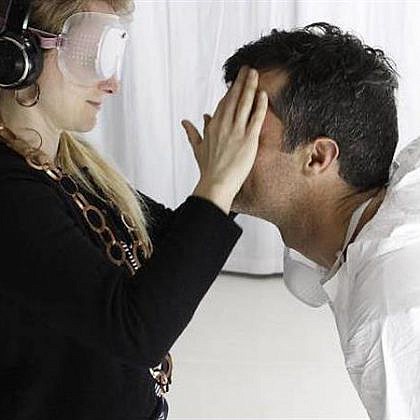By Andrea Simpson
This article was originally published on ArtsHub.
Access is not only something for presenters to address. As successful works are created and mounted by diverse artists, it’s also become an integral part of creative practice.
The aesthetic use of access in art, particularly in theatre-based productions, is becoming a prominent and exciting principle that underlines marginalised artists’ creative practice. By devising artistic projects with access in mind from the very beginning, the aesthetics of the artwork is changed in a unique and intrinsic way – elevating audience experience, and altering the way stories are told.
In many examples, stories told with access at the forefront creates work that all people can enjoy, and is not aimed specifically at able-bodied audiences.
However, in the example of award winning art performance Imagined Touch, devised by artist Jodee Mundy in collaboration with two Deafblind artists, performer Heather Lawson and pianist Michelle Stevens, the work targets able-bodied audiences.
A multi-sensory arts performance project exploring the world of Deafblind culture, Imagined Touch, first conceived in 2013, exposes able-bodied audiences to tactile sign language and the navigation of the world through this unique point of view.
‘When the abled-bodied audience enters the space they are given head-sets and goggles so they don’t see or hear,’ Mundy told ArtsHub.
‘Deaf people experience the work but they are the ones guiding able-bodied people. And then, for people who are blind or visually-impaired, we give them an audio description of everything that’s going on.
‘So in this work everyone plays a different role – and we shift the power dynamic. What I love about that is suddenly it’s the people with disability who are the ones telling the story and people who are able-bodied are receiving.
‘In essence what we were doing is revealing our culture, our language and our rituals – how we see the world. I think it’s important to point out that able-bodied culture is about exclusion, and disabled culture is about inclusion. So, I think for so many years, centuries, people have just seen disability as other or less,’ she said.
After massive success in Australia, Imagined Touch will travel to the Barbican Centre in London in November later this year to continue the cultural exchange. Mundy’s new work Personal, now touring regionally, is another stellar example of access creating a new aesthetic, where the principal underlying the work is this focus on accessibility.

